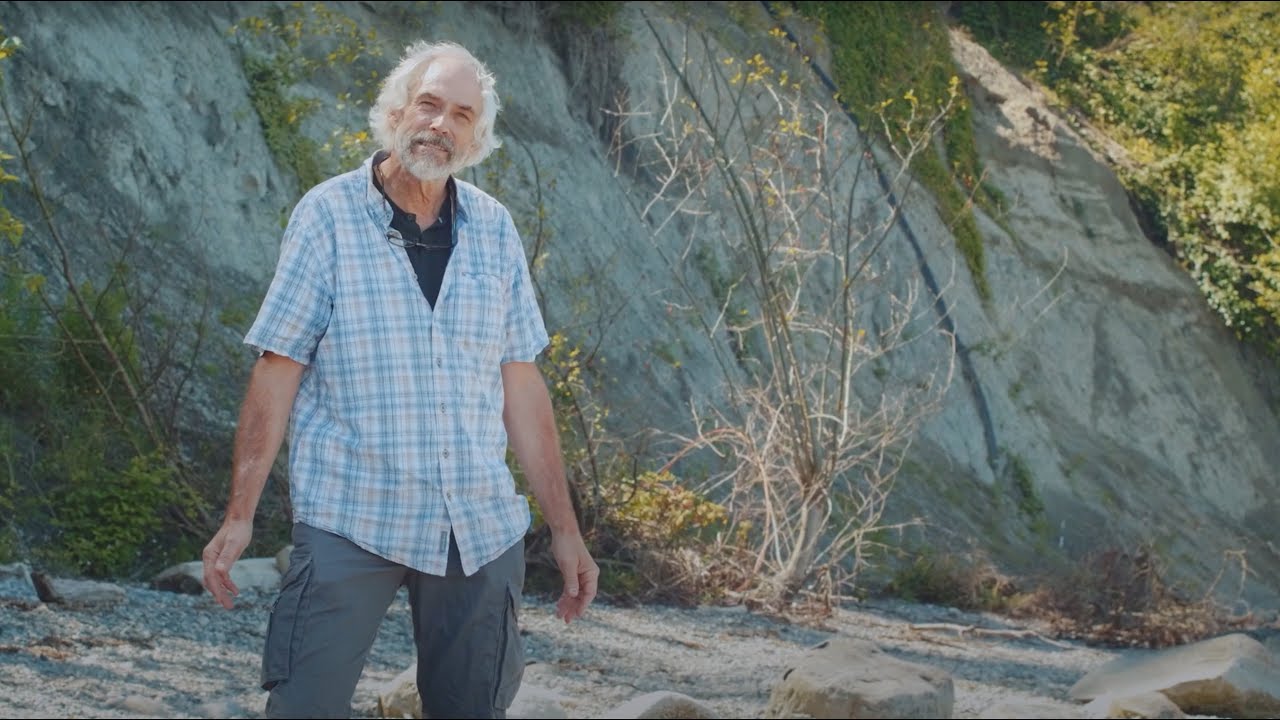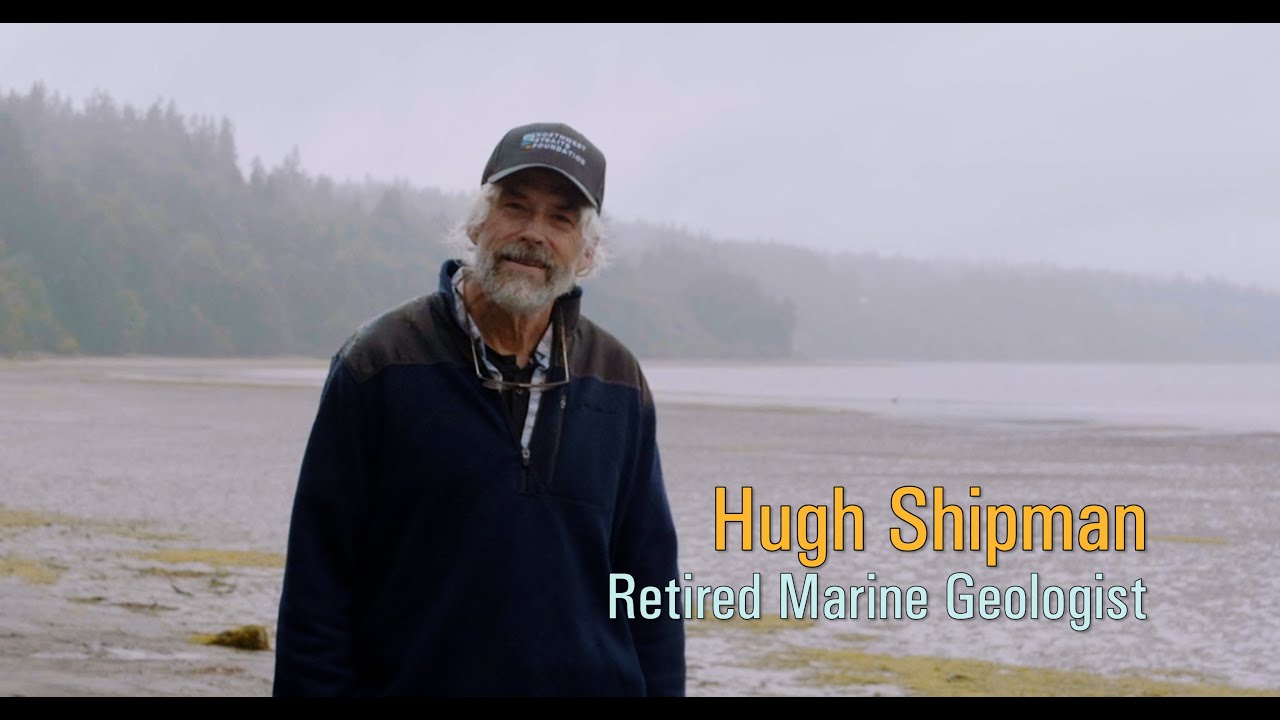Coastal Landowners
People have long lived on the shoreline. Coast Salish people utilized the bounty of resources provided by the nearshore for their livelihood. The shoreline has been a critical part of our lives, and of our ancestors, especially in the Puget Sound region; but our relationship with the shoreline has changed throughout this time. Humans have made alterations the shoreline and natural processes. Some of these alterations have unintended consequences on the nearshore environment.
Shore Friendly Videos
Shore Friendly (Kitsap County)
Shore Friendly Living - Coastal Bluffs and Beaches (Northwest Straits Foundation)
Shore Friendly Living - Managing Shoreline Erosion (Northwest Straits Foundation)
Shoreline Impacts
Shoreline Armoring
Over 25% of the 2,500 miles of Puget Sound shoreline is armored. Shoreline armoring consists of structures built in the nearshore including bulkheads, docks and other structures that prevent erosion or provide access to the water. These structures create a barrier between the land and water and prevent fine sediments from being replenished. In a natural system, fine sediments are continually moving through a drift cell.
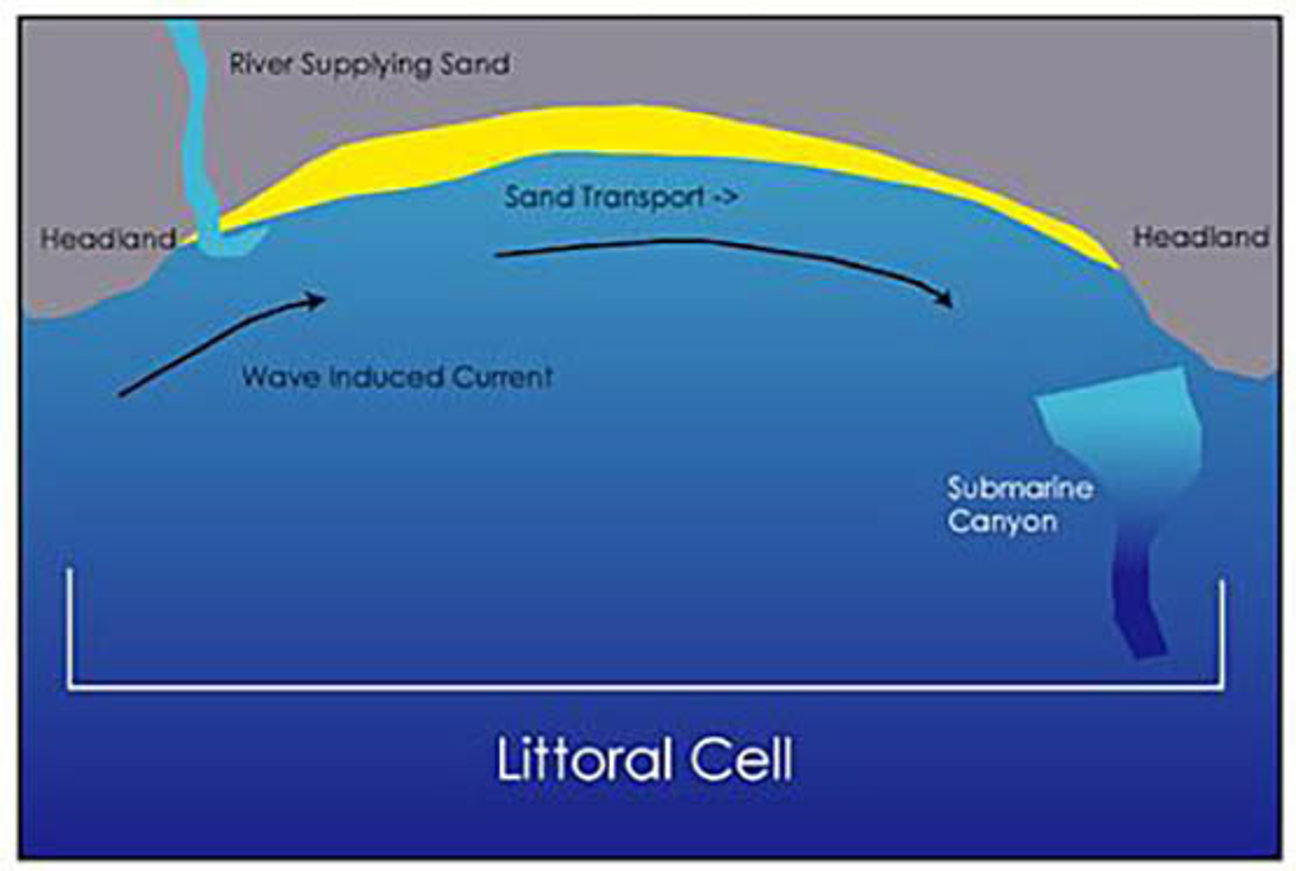
A drift cell is a geographically defined area of coast that has a distinct, self-contained cycle of sedimentation. Also known as a littoral cell, these cells require a source of beach material, a transport zone, and a location to deposit the sediment.
However, when a bulkhead is installed, the source of sediment is removed and the cycle is broken. Erosion from the bluff is then inhibited and sediment is washed away and no longer available to replenish surrounding beaches. Over time, the beach becomes increasingly rocky and loses the ability to support eelgrass beds, shellfish, intertidal invertebrates, forage fish spawning, and riparian vegetation. These impacts can then ripple throughout the food web of the Puget Sound and impact salmon and orca populations, as well.
Although bulkheads may protect property and structures in the short term, armoring structures do not prevent landslides, can be expensive to maintain, and can lead to increased erosion along neighboring beaches.
Runoff
As regulations have reduced industrial water pollution, 60% of water pollution is now a result of individual human impacts including oil leaking from cars, fertilizer use, and failing septic systems. Water moving across a lawn or impervious surface, without buffers or rain gardens, may pick up and transport pollutants to the shoreline. These pollutants harm the nearshore environment and marine organisms. Uncontrolled runoff can also increase slope erosion and slope instability. While landslides are a natural process, increased runoff and drainage failures can speed up and increase the impact of the landslide on your property. The photo below shows a home on Whidbey Island after a landslide in January 2013.
Vegetation Removal
The natural geology of Puget Sound bluffs results in an estimated 2-10 cm per year rate of erosion. Cutting trees, compacting soils and planting grass can increase this erosion rate. Removal of vegetative material may appear to be an easy way to improve views and increase lawn area along the shoreline but it can have lasting impacts on your property.
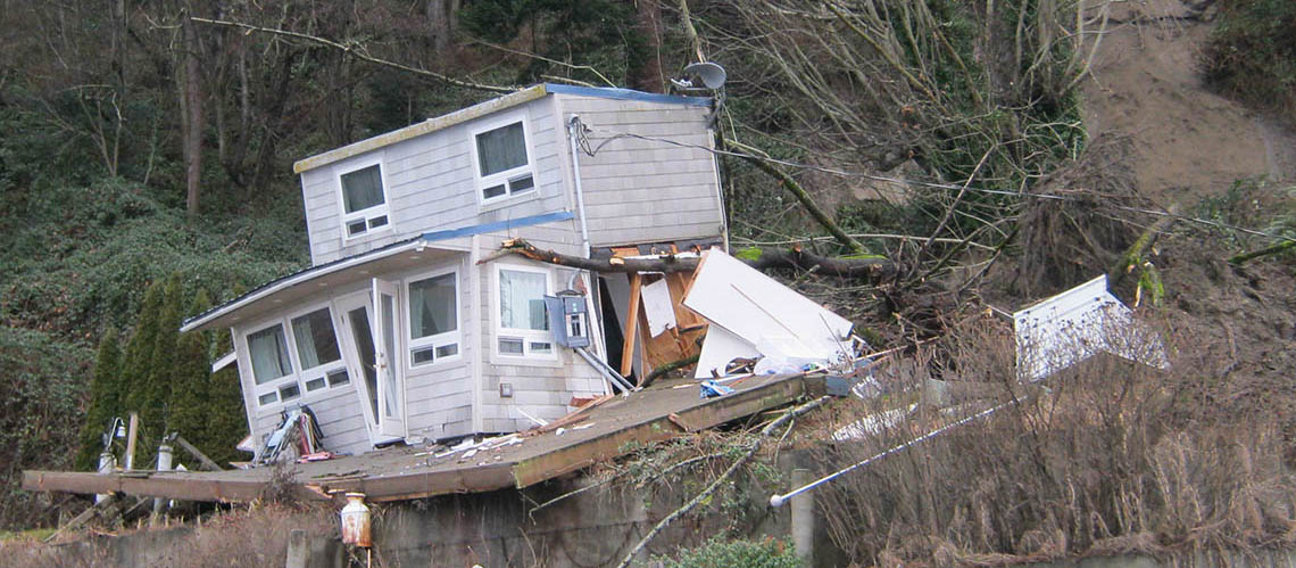
Slope stability depends on the roots of plants and trees to reinforce the soil. As vegetation is removed slope stability decreases which contributes to slope erosion, loss of beach area, and increasing susceptibility to landslides. While manicured lawns might be attractive, they can have unintended consequences. This environmental change has direct and indirect effects on marine shore areas, impacting forage fish spawning habitat, eelgrass beds, and shellfish beds. Juvenile salmon specifically rely on overhanging trees and shrubs to provide shade and a constant supply of terrestrial insects which are a substantial portion of their diet.
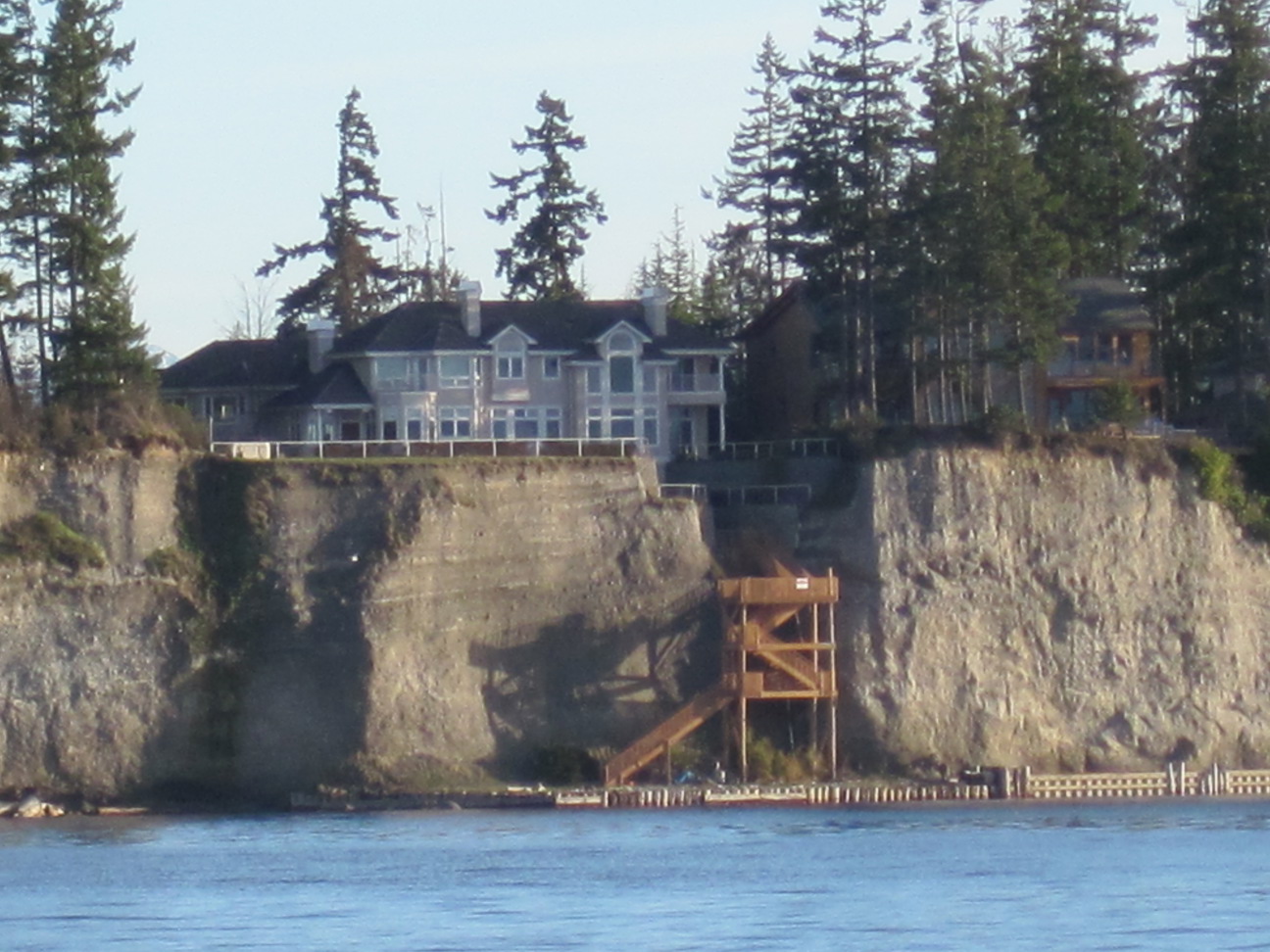
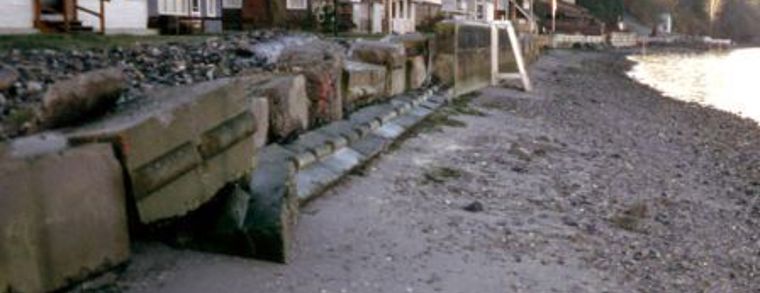
Samish Island: Before
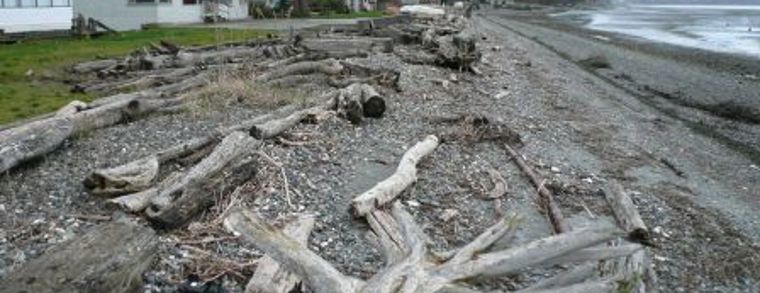
Samish Island: After
Shoreline Stewardship
Beaches and bluffs are subject to the natural erosion occurring in Puget Sound. Properly managing your high bank property can successfully minimize erosion and landslides while maintaining a healthy, nearshore environment. Keep in mind that many of these techniques do require permits; always consult with an expert before making any of the changes proposed below:
1) Set structures back from bluff and beach edges
- Most local codes require structures to be set back a certain number of feet from the bluff and shoreline
- Puget Sound bluffs have an erosion rate that is highly variable from year-to-year and location-to-location
2) Use “soft armoring” techniques, such as:
- Installing large woody debris or gravel berms (permits required)
- Managing a native nearshore vegetation buffer instead of a grass lawn right to the beach edge
3) Minimize runoff and protect water quality by:
- Eliminating fertilizer use on lawns and gardens
- Limiting impervious surfaces, such as pools and pavement, on your property
- Monitor and update septic system
4) Manage vegetation to stabilize slopes:
- Trim trees instead of complete removal
- Maintain vegetation on and near slope to decrease erosion
- Plant native species on your property
5) Talk to your neighbors!
If other people along the shore have bulkheads, tell them about the implications for both their beach and your beach. Form a community of stewards for your shoreline.
Before and After - Soft Armoring Projects

Seahurst Park in Burien: Before

Seahurst Park in Burien: After
Citations
- Johannessen, J. and A. MacLennan (2007). Beaches and Bluffs of Puget Sound. Prepared in support of the Puget Sound Nearshore Partnership. Technical Report 2007-04.
- Marine Shoreline Armoring and Puget Sound. Washington Department of Ecology Publication 10-06-003 (2010).
- Fresh, K., M. Dethier, C. Simenstad, M. Logsdon, H. Shipman, C. Tanner, T. Leschine, T. Mumford, G. Gelfenbaum, R. Shuman, J. Newton (2011). Implications of Observed Anthropogenic Changes to the Nearshore Ecosystems in Puget Sound. Prepared for the Puget Sound Nearshore Ecosystem Restoration Project. Technical Report 2011-03.
- Washington Department of Ecology. What you can do.
- Shipman, H. Coastal Bluffs and Sea Cliffs on Puget Sound, Washington.
- Healthy shorelines equal a healthy Puget Sound. Washington Department of Ecology Publication 10-06-004 (2010).
- Brennan, J.S., K.F. Higgins, J.R. Cordell, and V.A. Stamatiou. 2004. Juvenile Salmon Composition, Timing, Distribution, and Diet in Marine Nearshore Waters of Central Puget Sound in 2001-2002. King County Department of Natural Resources and Parks
Information And Resources
- Your Marine Waterfront: A guide to protecting your property while promoting healthy shorelines (WDFW)
- Shore Stewards Guide for Shoreline Living (Shore Stewards - WSU Extension)
- Do You Live Near the Bluff's Edge? A few do's and don'ts to help protect your property
- Shorelands and Environmental Assistance Program (Ecology)
- Shoreline Erosion Rates and Armoring Impacts (Ecology)
- Soft Shore Protection As An Alternative To Bulkheads: Projects And Monitoring (Coastal Geologic Services)
- Value, Benefits and Limitations of Vegetation in Reducing Erosion (Greenbelt Consulting)
- Greenbelt Consulting: “Bio-structural” Erosion Control (Greenbelt Consulting)
- Washington State Coastal Atlas (Ecology)
- Snohomish County Permitting Center
- Washington Administrative Code for Shoreline Modification
- Snohomish Health District - Septic System Information
This webpage was created in partnership with the Northwest Straits Foundation.
